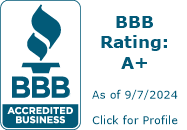Secure your future with Business Insurance!
Early Return To Work Program

Identifying and offering transitional work after an injury or illness benefits both the injured worker and the employer. An Early Return to Work program can lead to:
- Better health outcomes for injured workers.
- An earlier return to full-time duties that is more challenging and fulling.
- Prevention of interruptions to salary and a return to full-time pay.
- Improved loss and expense results for claims.
- Retention of skills that the injured person still offers.
- Improved morale and a sense that the company wants to keep the injured person involved.
Return to work programs should have an end goal: a time when the worker, claim handler, and employer agree the worker can resume the duties he or she had before leaving work, or similar responsibilities.
Finding a meaningful job may require some discussion and thought. It will depend on the skills and abilities of the injured person. It is important to set expectations for the program at the onset of every claim.
Developing a Return to Work Policy
- Create a written policy and educate new and existing employees. Set expectations that employees returning to work will perform temporary transitional work until released by a doctor for full duty or unrestricted work.
- Assign Return to Work program management to your staff. This could be someone in the office who reports claims and coordinates with your medical provider.
- Identify how transitional work can be made available.
- Determine if the full-duty job can be modified to allow the employee to remain in their existing position.
- Consider if work can be modified to help the person.
- Identify temporary transitional work that can be assigned.
- Develop job descriptions or physical demand assessments. This will help the attending physician understand the work that is available so that transitional work can be offered.
- Notify medical providers that you will accommodate restrictions. You can ask a clinic to tour your operation or provide job assessments when someone visits the doctor. The important point is that the physician has an understanding of the work from the company perspective and not just the injured person.
- Report injuries promptly. Early reporting of injury or illness is the first step in a successful Return to Work program and takes no extra time on the part of the employer. Studies show loss costs for Workers’ Compensation claims reported 29 days or more after an accident resulted in claim costs about 45% higher than those reported one day after an accident.
- Provide medical treatment and injury reporting promptly. A copy of the job description or physical demand assessment should be provided to the doctor. Transportation for the injured person may be needed. Find a transitional work job for the injured person as soon as possible after the examination is obtained.
- Investigate the accident or incident to determine possible causes and solutions to prevent similar incidents. Implement necessary corrective actions.
- Communicate and coordinate the claim until the person receives a full work release for normal duties. Keep all records of the incident and treatment.
- There may be situations where someone cannot return to transitional work either because of the nature and extent of injury or because of the work environment. This should be the exception rather than the rule. Close communication with the claim handler is critical in these cases. Many injured workers who are unable to work report a sense of isolation and uncertainty about their future. If the person cannot work at all, communication should be maintained to recognize that the worker is valued and every effort will be made to bring them back as soon as their recovery has progressed to the point where that is possible.
Modified or Temporary Work Tasks
These are some suggestions for tasks an employee can do if they are not ready to return to full work. You can be creative as long as the work is needed and meaningful.
- Collect Safety Data Sheets for chemicals currently in a work area or plant. Inventory chemicals
looking for any that do not have SDS. - Inventory parts – perhaps sorting items in a warehouse that are likely to be used and can be scrapped. (Remember, it does not need to be a full 8 hour day.)
- Review safety program guidelines related to who has received training. Develop a list of “tool box talks” related to your work processes.
- Clean or paint areas of your operation that you have not been able to improve.
- Quality checks, sorting rework or scrap, etc.
- Assemble new employee manuals.
- Shred old files.
- Plan the company picnic, Christmas party, industry show booth, etc.
- Answer the phone, file, office, work, etc.
A sample Return to Work Policy, physician letter, and physical demand assessment can be found here.
Download This Article
Additional Safety Topics
Insurance Solutions for a Wide Range of Businesses
From contractors to coffee shops, we offer insurance designed for many types of businesses, including:
Specialty Insurance
Commercial Auto Insurance Workers' Compensation Insurance Manufacturing Insurance Insurance for WineriesConstruction and Contracting
General Contractor Insurance Carpenters Insurance Plumbing Insurance Excavator Insurance Electrician Insurance HVAC Business Insurance Lawn Care Business InsuranceRetail and Service
Retail Business Insurance Grocery Store Insurance Barber Insurance Pet Grooming Insurance Florist Insurance Bakery Insurance Photographer Insurance Beautician Insurance Coffee Shop Insurance Funeral Home Insurance Janitorial InsurancePolicyholders can request access to our On-Demand Video Training Service, which includes over 5,000 high-quality safety and human resource training videos. This service is provided at no cost to our policyholders.
View the Streamery Training Courses that are Available To get access to a Streamery course, contact your Hastings agent.

Monnit Remote Monitoring Solutions is offering Hastings policyholders a 20% discount on hardware and a 40% discount on software and connection services.
Monnit provides wireless IoT sensor solutions for remote monitoring across industries, offering real-time data tracking for temperature, humidity, motion, water detection, and more to help businesses optimize efficiency and prevent costly issues.
Secure your future with Business Insurance!
Hastings Insurance Company
404 E. Woodlawn Ave.
Hastings, MI 49058
Monday-Friday
8:00 a.m. - 4:30 p.m. (EST)
(800) 442-8277
Terms of Use and Privacy Statement© Hastings Insurance Company. All rights reserved.



